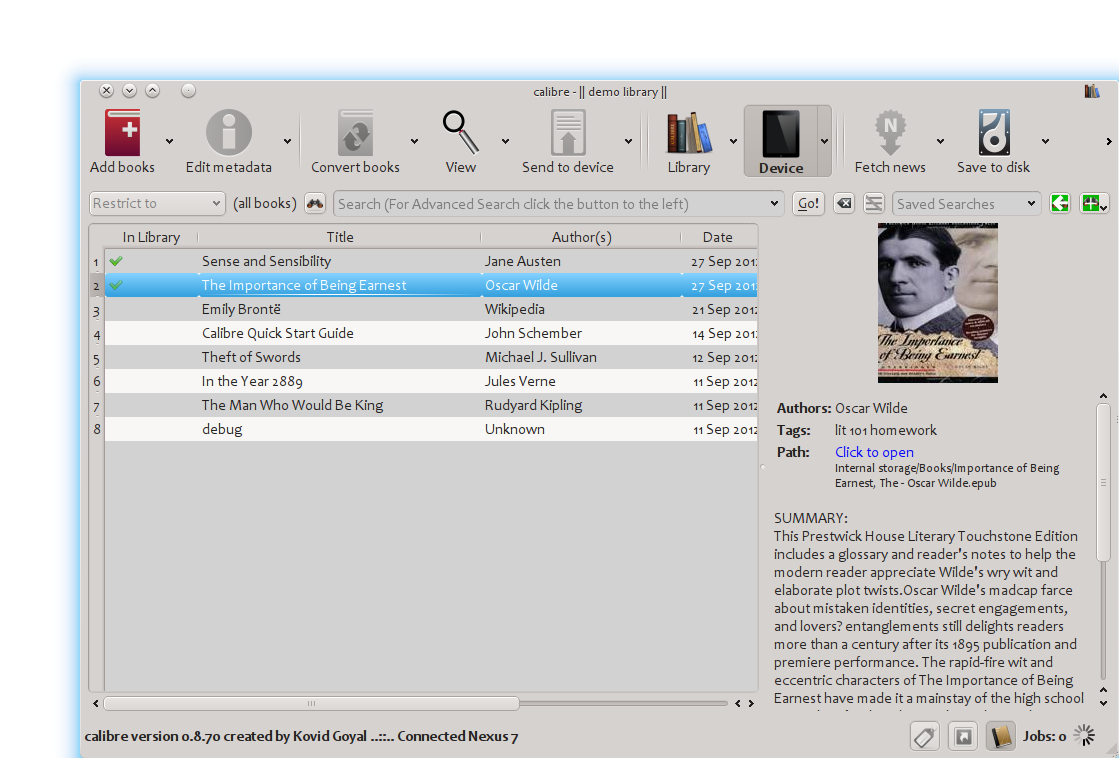CALIBREUSEDARKPALETTE - set it to 1 to have calibre use dark colors and 0 for normal colors (ignored on macOS). On Windows 10 in the absence of this variable, the Windows system preference for dark colors is used. SYSFSPATH - Use if sysfs is mounted somewhere other than /sys httpproxy, httpsproxy - used on Linux to specify an HTTP (S) proxy. Caliber (or Calibre): Many people often wonder what the difference between a caliber and movement are. To summarize it, basically the caliber is a part of the movement identifies the position and size of the wheel train and barrel among other components. Windows 10: Add support for dark mode. If you turn on dark mode under the Windows Settings-Personalisation-Colors and restart calibre it will use dark colors. Can also be enabled by setting the CALIBREUSEDARKPALETTE environment variable. Polish books tool: Add a setting to add or remove soft hyphens from the book text; Viewer: Re-enable. All highlights can be both stored in EPUB files and centrally in the Calibre library. The new release also feature Dark mode support. On Windows and Mac, it is activated automatically based on OS settings. In Ubuntu Linux, launch the software in dark mode via CALIBREUSEDARKPALETTE=1 environment variable. Safenet motherboards driver download for windows. After selecting dark mode, the background for programs like notepad, file explorer etc, including Calibre (with interface style set to system default) are still light. Background color for taskbars and some other elements do go dark, but not all.
Calibre Dark Mode Android
 -->
-->Creates a subkey and entries for a service in the registry and in the Service Control Manager database.
Calibre Dark Mode Windows


Syntax

Calibre Dark Mode Windows 10
Parameters

| Parameter | Description |
|---|---|
<servername> | Specifies the name of the remote server on which the service is located. The name must use the Universal Naming Convention (UNC) format (for example, myserver). To run SC.exe locally, don't use this parameter. |
<servicename> | Specifies the service name returned by the getkeyname operation. |
type= {own | share | kernel | filesys | rec | interact type= {own | share}} | Specifies the service type. The options include:
|
start= {boot | system | auto | demand | disabled | delayed-auto} | Specifies the start type for the service. The options include:
|
error= {normal | severe | critical | ignore} | Specifies the severity of the error if the service fails to start when the computer is started. The options include:
|
binpath= <binarypathname> | Specifies a path to the service binary file. There is no default for binpath=, and this string must be supplied. |
group= <loadordergroup> | Specifies the name of the group of which this service is a member. The list of groups is stored in the registry, in the HKLMSystemCurrentControlSetControlServiceGroupOrder subkey. The default value is null. |
tag= {yes | no} | Specifies whether or not to obtain a TagID from the CreateService call. Tags are used only for boot-start and system-start drivers. |
depend= <dependencies> | Specifies the names of services or groups that must start before this service. The names are separated by forward slashes (/). |
obj= {<accountname> | <objectname>} | Specifies a name of an account in which a service will run, or specifies a name of the Windows driver object in which the driver will run. The default setting is LocalSystem. |
displayname= <displayname> | Specifies a friendly name for identifying the service in user interface programs. For example, the subkey name of one particular service is wuauserv, which has a more friendly display name of Automatic Updates. |
password= <password> | Specifies a password. This is required if an account other than the LocalSystem account is used. |
| /? | Displays help at the command prompt. |
Remarks
Each command-line option (parameter) must include the equal sign as part of the option name.
A space is required between an option and its value (for example, type= own. If the space is omitted, the operation fails.
Examples
To create and register a new binary path for the NewService service, type:
Additional References
